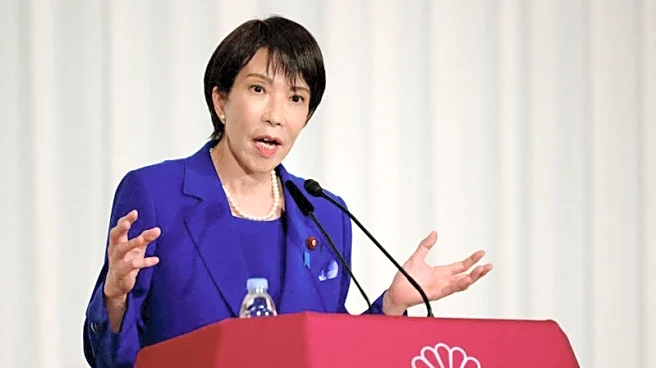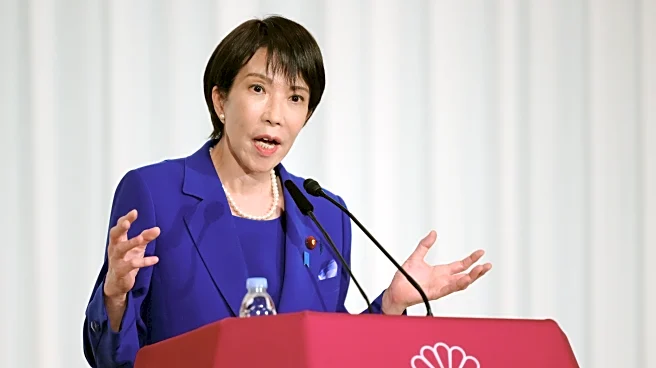What's Happening?
Prime Minister Shigeru Ishiba announced his resignation in September following the Liberal Democratic Party's (LDP) loss of majority in Japan's Parliament after the July elections. The LDP, which has been a dominant force in Japanese politics for decades, is now facing challenges in both houses of Parliament. In response to the party's diminished status, the LDP has selected Sanae Takaichi as its new leader, positioning her to potentially become Japan's first female prime minister. The parliamentary vote to confirm the new prime minister is scheduled for mid-October.
Why It's Important?
The resignation of Prime Minister Ishiba and the potential appointment of Sanae Takaichi as Japan's first female prime minister marks a significant shift in the country's political landscape. This change could influence Japan's domestic and foreign policies, especially given Takaichi's stance on strengthening Japan's military and her approach towards China. The LDP's loss of majority may lead to shifts in legislative priorities and governance strategies, impacting Japan's economic and social policies.
What's Next?
The upcoming parliamentary vote in mid-October will determine whether Sanae Takaichi will officially become Japan's prime minister. Her leadership could bring new dynamics to Japan's political scene, potentially affecting international relations and domestic reforms. The LDP will need to strategize on regaining popularity and addressing the challenges posed by their minority status in Parliament.
Beyond the Headlines
Takaichi's rise to leadership in a country with few women in top political positions could inspire discussions on gender equality and representation in Japan. Her policies and leadership style may also prompt debates on Japan's military stance and its diplomatic relations, particularly with neighboring countries.












